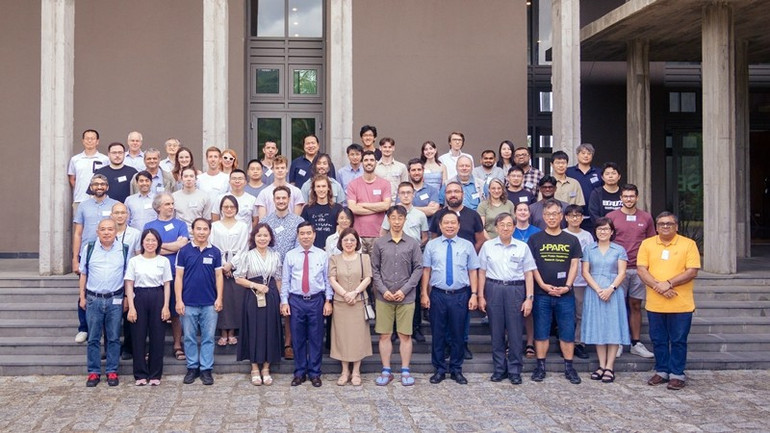Nearly 60 scientists from 18 countries including the United States, the UK, Japan, France, and Vietnam gathered on July 22 for the 2025 International Conference on Neutrino Physics, held at the International Center for Interdisciplinary Science and Education (ICISE) in Quy Nhon.

The event welcomed world-leading neutrino physicists such as Professor Takashi Kobayashi (Director of J-PARC, KEK and JAEA, Japan), Professor Masayuki Nakahata (Institute for Cosmic Ray Research, University of Tokyo), and Professor Tsuyoshi Nakaya (President of the Japanese Society for High Energy Physics and former spokesperson for the T2K international experiment), alongside esteemed researchers from top universities and institutes around the world.
Running from July 22 to 25, the conference was not only an international meeting of minds but also saw active participation from young Vietnamese researchers and students. It reflected the strong commitment of the “Rencontres du Vietnam” association and ICISE to advancing basic science in Vietnam and further integrating it into the global research community.
This marks another milestone in the development of Vietnam’s first experimental neutrino research group, based at the Interdisciplinary Fundamental Research and Education Institute (IFIRSE) within ICISE.
Dr. Nguyen Huu Ha, Deputy Director of the Gia Lai Department of Science and Technology, emphasized the importance of neutrinos in uncovering deep cosmic mysteries despite their elusive nature. He noted the conference as a valuable forum for sharing the latest research and fostering international collaboration in multiple disciplines.
“These scientific exchanges will help shape future strategic research directions and promote the development of influential, globally connected research groups,” Ha said.
Conference topics covered advanced and foundational aspects of neutrino science: oscillations from atmospheric, solar, accelerator, and reactor sources; Dirac versus Majorana neutrino nature and neutrinoless double beta decay (0νββ); leptogenesis mechanisms and tests of fundamental physics laws; flavor models and connections to Grand Unified Theories (GUTs); and neutrino-nucleus scattering and absolute mass measurements.
Cosmic and astrophysical neutrinos were also a major focus, including high-energy neutrinos and their role in multi-messenger astronomy - an emerging field that combines data from different cosmic messengers.
In addition to theoretical insights, the conference showcased innovations in neutrino detection technology: megawatt-class accelerators, large-scale Cherenkov light detectors, cutting-edge quantum sensors, beam monitoring systems, and advanced photodetection arrays.
Interdisciplinary applications such as geoneutrinos in geophysics, Earth tomography, and nuclear reactor monitoring for energy security were enthusiastically discussed.
Running concurrently with the conference was the 9th Vietnam School on Neutrinos (VSON9), held from July 16 to 25. VSON9 attracted both local and international graduate students and researchers, offering specialized lectures, hands-on workshops, and interactive sessions that inspired young scientists to pursue careers in neutrino physics.
Hosting the 2025 International Neutrino Physics Conference affirms Vietnam’s capacity to organize high-level scientific events and strengthens its position in global basic science. As neutrino research opens new frontiers in both physics and astronomy, Vietnam is establishing itself as a growing contributor to cutting-edge discovery.
PV